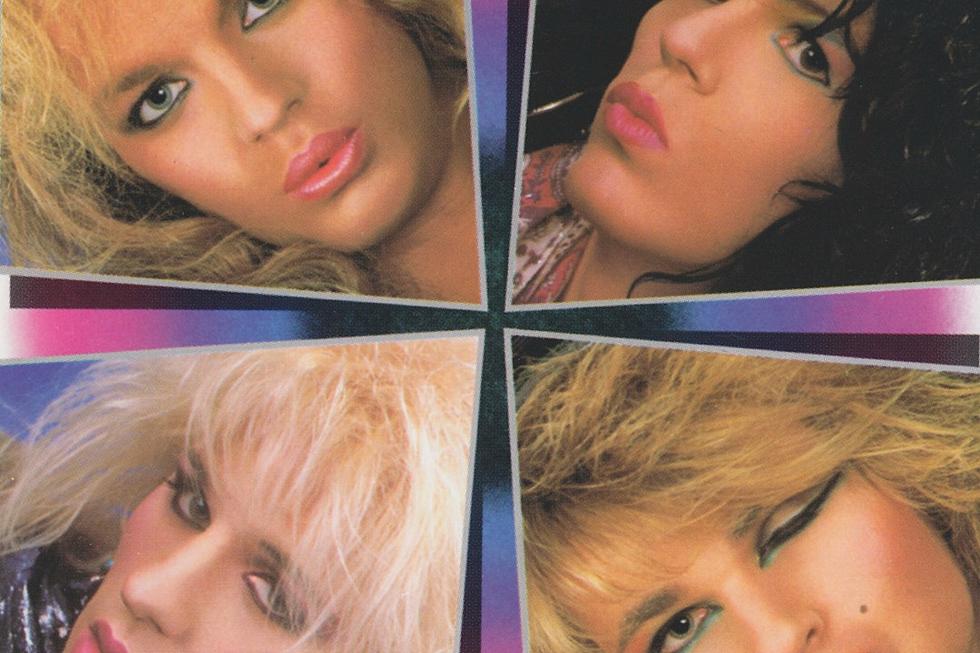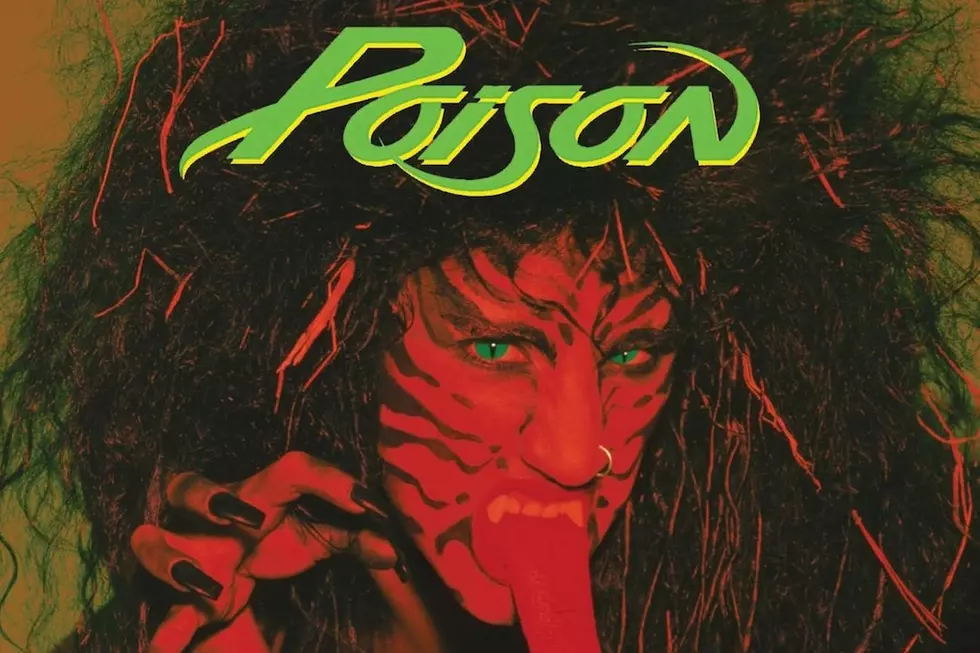
How Poison’s ‘Look What the Cat Dragged In’ Helped Define Hair Metal
The hard rock subgenre derisively referred to as "hair metal" existed well before Poison came along. But with their 1986 debut Look What the Cat Dragged In, they gave it an extra coat of lip gloss.
The group got its start in the late '70s, when singer Bret Michaels joined with his longtime friend, drummer Richard Ream — aka Rikki Rockett — to start the first in a series of local bands in their Mechanicsburg, Penn., neighborhood. The duo eventually hooked up with bassist Bobby Kuykendall — aka Bobby Dall — and guitarist Matt Smith to form a four-piece they initially called Paris.
After paying their dues on the local cover circuit, the band members switched their name to Poison and decided that in order to really break out, they needed to move to either New York or Los Angeles — and since L.A. had better weather, they headed west, seeking fame and fortune on the city's Sunset Strip. Like countless other acts before and since, they discovered West Hollywood wasn't quite the promised land they might have hoped to find.
"We all lived with a bunch of cockroaches in a one-bedroom apartment we couldn't afford the rent on. We had three years of that," Rockett told RAW. "There were a lot of times we thought we might have to come home with our tails between our legs. Bands like ours weren't getting signed at that time. The Mötley Crüe and Ratt explosion had happened, and labels had signed up all these bands who hadn't done well.
"So they'd done with rock and were looking for the new Duran Duran or something, and Poison wasn't that. But we weren't heavy metal either," he added. "We were sort of Aerosmith rock 'n' roll with some Kiss influence and nobody was interested. So we were forced to take an independent record deal."
Even before signing the contract in question, with the EMI-distributed Enigma Records, Poison faced additional adversity. Smith quit and headed back to Pennsylvania, leaving the group without a guitarist — and leading to a series of auditions that included a tryout from future Guns N' Roses co-founder Slash. The spot ultimately went to a brash Brooklyn native who called himself C.C. DeVille — and who nearly ruined his chances of joining the lineup by trying to get the band to play his songs instead of showing them he'd bothered to learn Poison's.
DeVille's outspoken personality added another potentially toxic ingredient to the group's already combustible dynamic, but he also brought Poison the missing piece they'd been looking for, in terms of showmanship as well as creatively. With their new guitarist in the fold and a small advance from Enigma, they booked a short block of studio time with ex-Ted Nugent producer Ric Browde and emerged with a 10-song LP, Look What the Cat Dragged In.
Released on May 23, 1986, the album struggled at first to find commercial traction. As Rockett acknowledged in his RAW interview, Poison came up after an early wave of like-minded bands, and Cat's release arrived during a relative lull in the late-'80s hair-metal boom — a problem compounded by Enigma's indie status. The record's first single, "Cry Tough," failed to chart and, at first, it looked destined to be a dud.
Watch Poison's 'Talk Dirty to Me' Video
Slowly but surely, Poison continued to win new fans over through touring, and with the album's second single — a tune DeVille brought to the band called "Talk Dirty to Me" — they finally found a foothold on the radio while entering heavy rotation at MTV, where their androgynous image and candy-colored look helped set them apart.
Yet while Poison's image helped the band make a splash, it also threatened to overshadow their music. Even in the style-conscious '80s, they took glam to a level that made it difficult for some listeners to take them seriously — and made it easy for others to mock their makeup and product-filled hair.
They welcomed the rush of attention that turned Look What the Cat Dragged In into a multi-platinum success, but the band members couldn't help getting a little defensive. "I don't think we look like girls, I think we look like guys who look cool," Michaels argued during a 1987 interview with McCall. "I mean, you don't want to go out with a guy who looks like shit, you know what I'm saying? I'm sure I wouldn't. Of course people made fun of us when we were back in Harrisburg, but look where we are now, you know what I'm saying?"
Rockett told Melody Maker that Poison had a "sense of contrast. All my life I've liked contrasts – a black room with white curtains, a purple room with orange curtains. I always thought it was cool to see a band come out with their hair done and everything and rip across the stage and they're thrashing."
They'd continue to thrash for the remainder of the '80s, following Look What the Cat Dragged In with the even more successful Open Up and Say ... Ahh! two years later. They steadily toned down their look between that album and its successor, 1990's Flesh and Blood, but Poison remained as dedicated as ever to the hedonistic themes and uptempo sound that made them famous.
"We're like the Club Med of rock 'n' roll," Michaels said. "We're a getaway and we're escapism. If I had to describe our band, I'd say we're the most kick-ass rock n' roll band out right now and we just happen to have a very glamorous image to go with it. We're dressed to kill."
Dall added: "We don't have any boundaries. We're for kids of all ages, for parents, for grandparents. We were four young little scared boys who became men together and it was only through our love for each other that we succeeded. And I don't mean that in a gay way."
1986's Best Rock Albums
More From Ultimate Classic Rock









